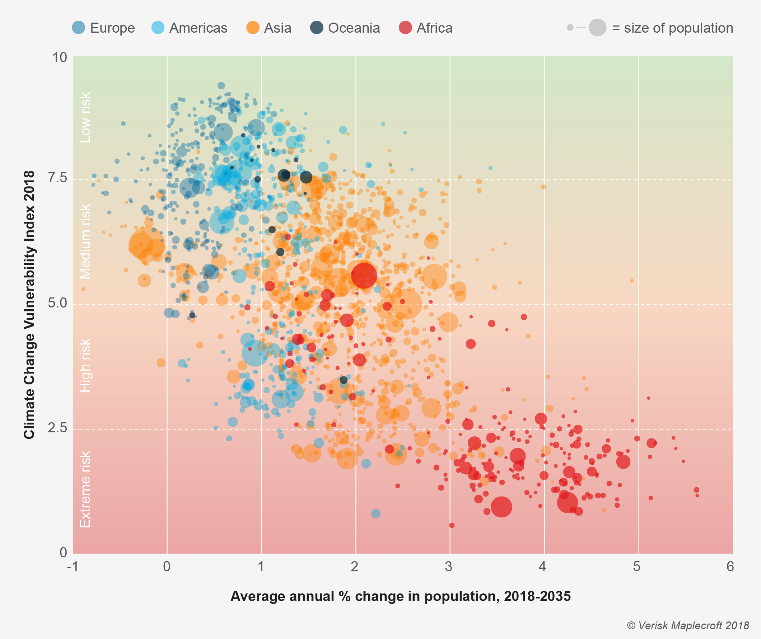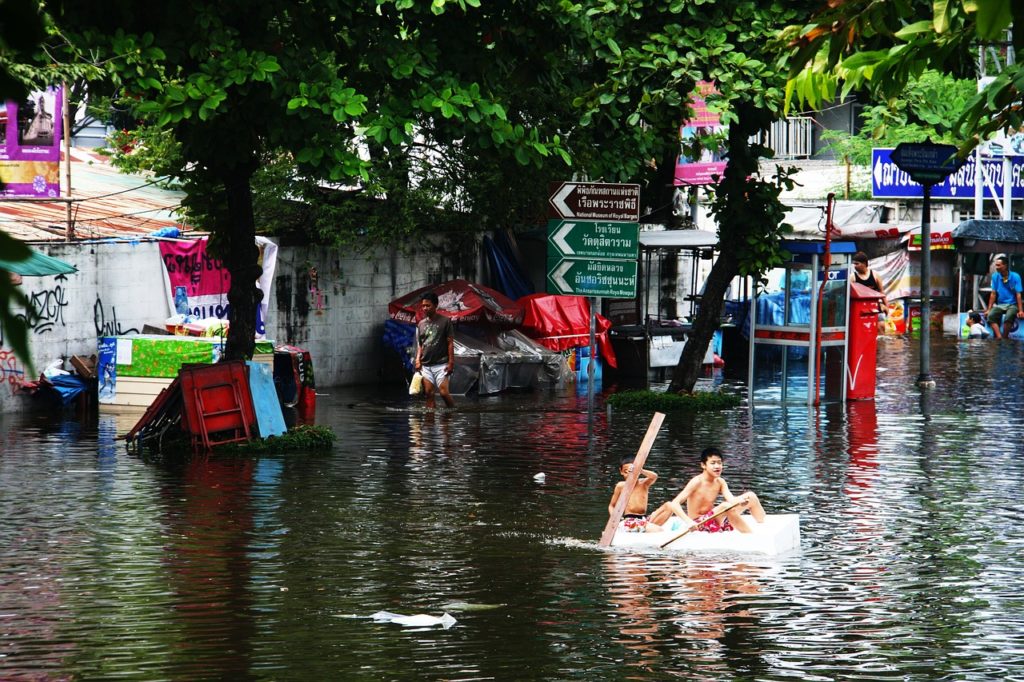Sea Level Rising Projections
Sea level rising will continue for centuries even if warming was capped at 1.5C above pre-industrial levels, prescribed in the lower limit of the Paris Agreement, warned the Intergovernmental Panel on Climate Change (IPCC) in its special report in October 2018.
Island nations and countries with high population density and economic activity in low-lying coastal regions are vulnerable to sea level rise, including Asia and the Pacific region, home to around 59% of the world’s population.
Brunei, Cambodia, China, Indonesia, North Korea, South Korea, Malaysia, Myanmar, Papua New Guinea, Philippines, Thailand and Vietnam were identified as countries where the “impact of sea level rise will be particularly severe”, according to the World Bank.

Using satellite maps overlaid with population growth, World Bank researchers pinpointed coastal areas with low elevation and assessed the probable consequences of continued sea level rise for 84 developing countries.
The dangers of rising sea levels include land loss from the permanent inundation of low-lying coastal areas, intensification of inundation from storm surges, loss of critical coastal resources such as mangroves, and progressive salinization of soil and water that is harmful to crops.
Arable land throughout low-lying deltas in South and Southeast Asia, which produces 88% of the world’s rice supply, is under threat from rising sea levels. Most of the rice is a staple food for domestic consumption.
How Much Are Sea Levels Rising?
Not all countries are equally vulnerable – China and Indonesia are the countries at the highest risk of permanent inundation.
In China, more than 23 million people and 32,000 square kilometres of coastal areas are at risk of inundation if sea levels rise by one meter. These estimates multiply to more than 52 million people (71,000 square kilometres) if sea levels climb to three meters.
A one-meter rise in Indonesia would displace 2.8 million people, increasing to 5.1 million people with a three meter rise.
Low-lying Mekong and Red River Deltas communities are also among the most vulnerable regions. Around 11% of Vietnam’s population are at risk if sea levels rise by one meter and an alarming 26% percent if they rise by three meters.
On a city level, Manila, Jakarta, Bangkok, Ho Chi Minh City, Yangon, Surabaya, Makassar, and six other cities in the Philippines are among the top 25 cities at risk of a storm surge following a 1m sea level rise.
In East Asia, the Asian Development Bank estimates the costs of rising sea levels at US $864 billion– referring to the assets of 23 East Asian cities vulnerable to flooding and exposed to inundation by 2100. In South Asia, the mean cost for Indonesia, the Philippines, Thailand and Vietnam could be equivalent to losing 6.7% of combined GDP each year.
The eye-opening report highlights just how vast the economic costs of rising sea levels will be for infrastructure, industries, coastal zones and agriculture across Asia.
You might also like: Sea Level Rise Projections: 10 Cities at Risk of Flooding
Protecting High-Risk Areas with Adaptive Measures
Adaptation measures in targeted cities can strengthen flood resilience, protect inhabitants and improve future development planning to deter large displacement, food insecurity and damage to infrastructure. Specifically, these include dyke reinforcements, upgrading drainage, building sea walls and the plantation of mangroves.
The aforementioned studies by the World Bank and ADB are valuable in targeting vulnerable coastal regions in need of resource allocation and high-impact adaptation measures.
In Bangladesh, multiple technical studies are informing coastal area management initiatives beyond the region. The World Bank is examining the role of mangroves and embankments to protect coastal areas from storm surges, the impacts of progressive salinisation on agriculture, the spatial and temporal variations in cyclonic storm impacts, among others.
Addressing climate change is a national priority in Bangladesh – the country has invested more than US $10 billion in climate change actions.
Despite its considerable progress, however it faces continuous challenges associated with climate change, with worsening floods, massive erosion and fresh water shortages. Two-thirds of the country is less than five meters above sea level.
In light of the on the latest data on rising sea levels and its severe impact in Asia, immediate planning for adaptation and targeting resources at the local-level is more urgent than ever.
You might also like: What is Causing Sea Level to Rise?
References:
ADB. “Economic Costs of Rising Sea Levels in Asia and the Pacific”, Features, Asian Development Bank. January 2014.
Dasgupta, Susmita. “Risk of sea-level rise: high stakes for East Asia Pacific region countries”, World Bank, East Asia and Pacific. March 2018.

















